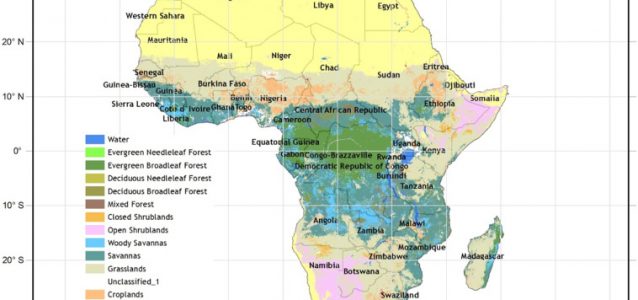On the suitability of using vegetation indices to monitor the response of Africa’s terrestrial ecoregions to drought
Drought remains one of the world’s most devastating phenomena, exhibiting impacts in both magnitude and frequency. African vegetation remains highly vulnerable to drought impacts and this is heightened by a changing climate. In this study, we evaluated the suitability of vegetation indices to monitor the response of Africa’s terrestrial ecoregions to drought. Here, we used the SPEI, a global drought index to investigate the spatiotemporal characteristics of drought on vegetation. In addition, TVDI, TCI, VCI, NVSWI, VSWI and DSI, which are remotely sensed derived drought indices were also used to characterize drought. For the vegetation indices, we used the optical satellite calculated NDVI; VOD, a passive microwave remote sensing product; and derived Nvod as proxies for vegetation. The climatology of climate and vegetation data was calculated, and the trend of the variables was examined. Additionally, comparisons were performed between the SPEI and the other drought indices. Subsequently, we computed the correlations between the SPEI and vegetation indices spatially, temporally and seasonally.
Our results show that VOD and the NDVI have similar spatial distribution, with higher values of the indices recorded over the Democratic Republic of Congo (DRC) and Central African Republic (C.A.R) compared to the rest of the region. Furthermore, we also found that the indices have similar seasonal patterns as precipitation and an inverse relationship with temperature. The study also reveals that there is a declining long-term trend of precipitation over evergreen needleleaf forest, evergreen broadleaf forest, and woody savanna; and an increasing trend of VOD and NDVI over Africa’s ecoregions. Furthermore, the results show a high SPEI – VOD correlations (r2 = 0.8) in southern Africa and the Horn of Africa, and a weak response in the Sahelian region. While the response of NDVI is similar to a spatial distribution as VOD, the magnitudes of response are generally weaker in the NDVI, and the magnitudes and distribution of response by Nvod are similar to VOD. Also, the response of Nvod is the weakest across all the timescales although its magnitudes vary significantly from year – year, with the timescale of occurrence mostly shorter for JJA but largely longer for MAM. However, the magnitudes of the response of vegetation indices are different for remotely sensed derived drought indices. In addition, the mean and trend of the response of VOD are consistently stronger in evergreen needleleaf forest and open shrublands but weaker over the evergreen broadleaf forest. Our study has presented insights on methods by which the impacts of droughts on plant activities and functions may be monitored.
Paper Link:
Lawal, S., Hewitson, B., Egbebiyi, T.S. and Adesuyi, A. 2021. On the suitability of using vegetation indices to monitor the response of Africa’s terrestrial ecoregions to drought. Science of The Total Environment, Volume 792.
